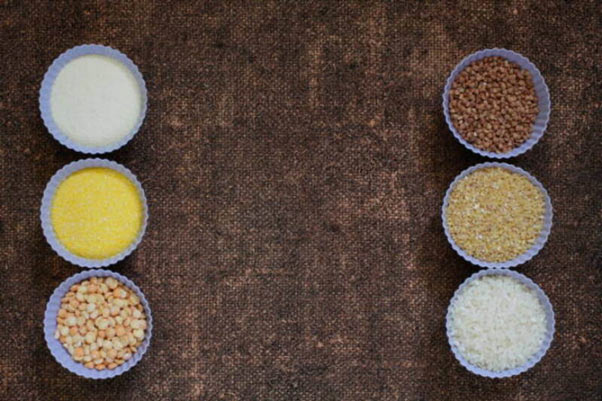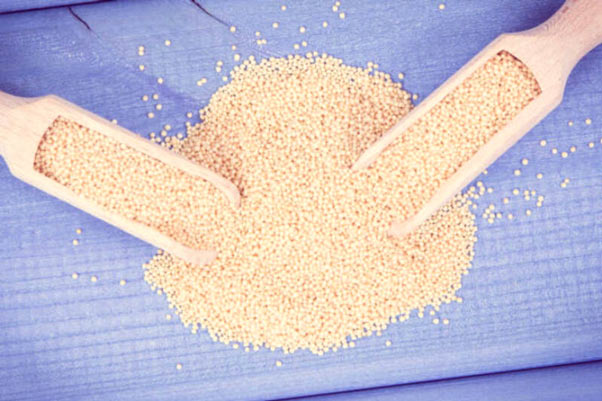Uncovering the Health Secrets of Millet: Your Pathway to Wellness
Oct 20, 2023 By Madison Evans
Are you looking for a way to boost your nutrition intake and supercharge your health? Millet grains can be the ideal solution! Packed with essential nutrients, millet is often overlooked as one of nature's most nutritious powerhouses. This ancient grain has been used to nourish communities around the world for centuries – and it's time we learn all about its incredible benefits. In this blog post, we'll uncover everything there is to know about millet: what it is, where it comes from, how to prepare it, and why everyone needs more of this powerhouse in their diet! Get ready for an introduction into understanding how millet can transform - and revolutionise - your wellness journey!
Introducing Millet – A Nutritional Powerhouse:
Millet, a group of small-seeded grasses, is often overlooked as a viable source of nutrition in Western diets. This grain is a nutritional powerhouse packed with protein, fiber, and vitamins, making it a valuable addition to any meal plan. Millet is also incredibly versatile and can be used in a variety of dishes, from breakfast porridge to pilafs and salads. It's time to give millet the attention it deserves and incorporate it into your meals for a healthy and delicious boost.
Nutritional Benefits of Millet and Its Role in a Balanced Diet:
Millet, a small, gluten-free grain similar in size to quinoa, has been heavily consumed in Africa and Asia for centuries. In recent years, its popularity has grown as more people become health-conscious and start looking for nutrient-dense grains to include in their diets. Apart from being rich in vitamins and minerals such as copper, phosphorus, and manganese, millet is an excellent source of fiber and protein, making it an ideal addition to a wholesome, balanced diet.
Incorporating millet in your meals can help to lower cholesterol, reduce inflammation, and manage blood sugar levels. If you're looking to reap its nutritional benefits, try substituting rice, pasta, or other grains with millet in your next meal.
Common Preparation Methods of Millet for Everyday Eating:

Millet is a versatile grain that can be incorporated into everyday meals to add an extra dose of nutrition. There are several preparation methods for millet, each offering a unique texture and flavor. Some popular ways to prepare millet include;
- Boiling
- Toasting
- Baking
- Pressure cooking
Boiled millet has a soft texture that can be used as a base for porridges and stews, while toasted millet offers a nutty flavor that works well in salads and soups. Baked millet can be made into a crispy snack, and pressure-cooking yields a fluffy texture that is perfect for side dishes. With so many delicious options, millet is a great addition to any diet.
1. Preparing Millet through Boiling:
To prepare millet through boiling, follow these simple steps:
- Rinse the millet in a fine-mesh strainer under cold running water.
- In a pot, add 1 cup of rinsed millet to 2 cups of water or broth.
- Bring the mixture to a boil, then reduce heat and let it simmer for about 20 minutes, or until the liquid is absorbed.
- Fluff with a fork and let it sit covered for about 5-10 minutes before serving.
2. Toasting Millet for a Nutty Flavor:
Toasting millet is a great way to add a nutty flavor and extra crunch to your meals. Here's how to toast millet:
- Rinse the millet in a fine-mesh strainer under cold running water.
- In a dry skillet over medium heat, add the rinsed millet and toast for 5-7 minutes, stirring occasionally until the millet turns golden brown.
- Remove from heat and let it cool before using in your desired recipe.
3. Baking Millet for a Crispy Twist:
Baked millet is a great option for those looking for a crispy and delicious snack. Follow these steps to make baked millet:
- Rinse the millet in a fine-mesh strainer under cold running water.
- In a bowl, mix 1 cup of rinsed millet with 2 tablespoons of olive oil, salt, and your choice of herbs and spices.
- Spread the mixture on a baking sheet and bake at 375°F for 30-35 minutes, stirring occasionally until crispy.
- Let it cool before serving as a topping or snack.
4. Utilizing Pressure Cooking for a Fluffy Millet Texture:
Pressure cooking millet is a quick and easy way to achieve a fluffy texture that works well as a side dish. Here's how to pressure cook millet:
- Rinse the millet in a fine-mesh strainer under cold running water.
- In an electric pressure cooker, add 1 cup of rinsed millet with 2 cups of water or broth.
- Close and lock the lid and set to high pressure for 8 minutes.
- Once done, let the pressure release naturally for about 10 minutes before opening the lid.
- Fluff with a fork and serve as desired.
Exploring Traditional Medicine’s Use of Millet for Natural Remedies:
Traditional medicine has always relied heavily on natural remedies for treating ailments. Among the many natural remedies that are used is millet. Millet has a long history of being used for a variety of health conditions such as digestive, respiratory, and cardiovascular problems. In fact, some traditional practitioners consider millet as a superfood that is rich in nutrients and proteins. Recent studies have found that millet could also help regulate blood sugar levels, lower cholesterol, and have anti-inflammatory properties.
With the increasing interest in alternative therapies and natural remedies, it is no surprise that there is a renewed focus on the use of millet in traditional medicine practices. It is worth exploring the potential benefits of millet for natural remedies and improving our overall health.
Building Immune Health with Millet Recipes that Delight the Senses:

Millet is a versatile and nutrient-rich grain that is highly beneficial for building immune health. With its protein-rich and gluten-free composition, millet is an excellent food choice for people with dietary restrictions. It is also packed with minerals such as iron, magnesium, and phosphorus.
If you are looking for delicious and healthy ways to incorporate millet into your diet, you are in luck! There are many flavorful and gratifying millet recipes that can help boost your immune health and delight your senses. From Millet Tabbouleh to Millet Risotto, the possibilities are endless. So, why not give millet a try and see how it can enhance your well-being?
How to Incorporate More Millet into Your Daily Life for Maximum Benefit?
Millet, a gluten-free grain that is often overlooked, has a range of benefits that make it worth incorporating into your daily diet. This tiny grain contains essential nutrients like fiber, magnesium, and B vitamins which can help maintain healthy blood sugar levels, improve cardiovascular health, and promote healthy digestion.
Millet is incredibly versatile and can be used in a range of dishes, from breakfast porridge to salads, soups, and even baked goods. Try making a millet-based breakfast bowl with fresh fruit, almond milk, and a sprinkle of cinnamon. Or, use millet in place of rice in your next stir fry dish.
Conclusion:
To climb out of the depths of malnutrition, we can turn to a simple and time-tested grain; millet. By adding millet to our diet for even just one meal, we can dramatically improve the quality of our diets, as well as reap the numerous potential health benefits. With its pleasant flavor and ease in cooking, adding millet into your daily life is an effortless way to be more mindful about what you are consuming. Consider creating a delicious millet bowl with your favorite fruits for breakfast or swapping brown rice for millet in stir fry dishes for dinner to start off your journey towards eating more nutritiously.








